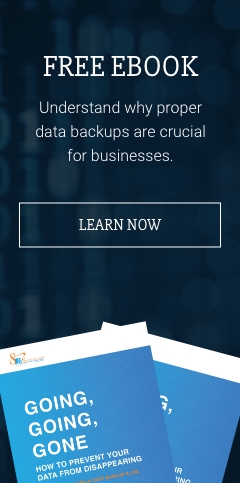With worldwide tech spending projected to reach a staggering $4 trillion in 2019, companies are becoming increasingly wary of the hype as they struggle to align technology with business imperatives. The fact remains that many organizations are spending more than they need to on IT. Many vendors attribute this overspending to the constant repairs and upgrades that old machines require. But that's only half the picture.
The main reason why many businesses are spending too much on technology is that they don’t have the necessary in-house expertise to know any better, yet they’re still reliant on their in-house data centers. That’s why outsourcing IT is an increasingly popular option. Not only does it eliminate the need for costly capital investments, but it also reduces downtime, increases efficiency, and makes concerns about technology obsolescence a thing of the past.
Yet, every business still needs to set a realistic technology budget that will give them plenty of space to grow while increasing their adaptability to change. The best approach is to start with the business problem rather than the technology itself. Achieving technology alignment is the only surefire way to increase cost efficiency and drive business growth, hence the need to think about how every technology solution you deploy adds value to your business.
What are the things you need to account for?
IT budgeting is a lot like any other area of financial planning in that it needs to be broken down by type and category. At the top of the hierarchy are capital and operational expenses.
Capital expenses include things like servers, workstations, mobile devices, and networking hardware. They’re often unpredictable by nature, due to the need for occasional repairs and upgrades, which are practically impossible to budget for. Operational expenses, by contrast, are easy to predict, but they typically account for the vast majority of an IT budget.
Here are the key cost categories you’ll need to consider when setting your budget:
#1. Staffing
With executive-level IT personnel typically commanding average annual salaries of $52,000, staffing is usually the biggest expense. On top of wages, you also need to consider taxes, benefits, and professional fees of short-term contractors such as project managers. Outsourcing your IT staffing needs to a consultancy firm can greatly reduce your human resources expenditures by giving you access to the expertise you need on demand. That way, you only have to pay for IT services when you need them. Alternatively, you can pay a small monthly fee to get round-the-clock support from a team of IT experts.
#2. Infrastructure
Unless you’re running a location-independent business operated entirely by mobile workers, you’re going to need networking infrastructure, even if you rely heavily on the cloud. In such cases, these expenses are unavoidable. Capital expenses include networking hardware, such as routers, switches, and cabling infrastructure. Operational expenses include things like broadband internet and mobile subscriptions.
#3. Hardware
While many businesses are moving their operations over to the cloud to take advantage of hardware resources on demand, there are still situations where you may need to invest in expensive hardware like in-house servers and workstations. For these expenses, you’ll also need to factor in the cost of installation, repairs and upgrades, and any ongoing maintenance contracts.
#4. Software
A lot of software such as Office 365 or Google G Suite can now be availed for a fixed monthly fee per user, thus making them easier to budget. Be sure to include any software subscriptions, one-time purchases, and any software development fees your business might face.
#5. Training
Any technology infrastructure is only ever as effective as people’s ability to use it, hence the need for onboarding and training. While most modern software are relatively intuitive and come with built-in training materials, other aspects like cybersecurity and information privacy require special attention especially since these matters have legal implications in many industries. Make sure you factor in the cost of any training programs such as subscriptions to industry learning.
Safebit Solutions provides comprehensive technology solutions to help clients achieve efficiencies and increase productivity without breaking the bank. Talk to us today to find out how.


